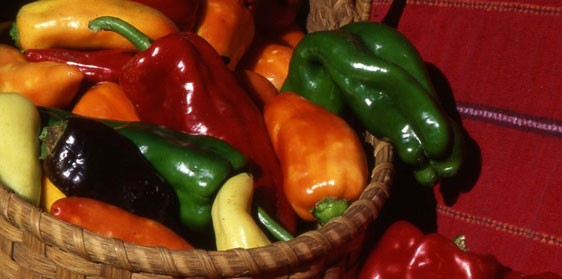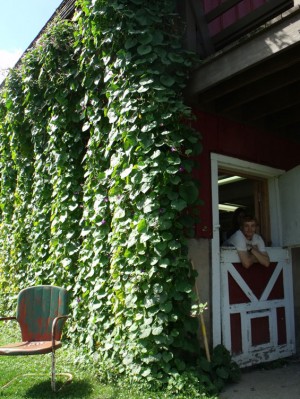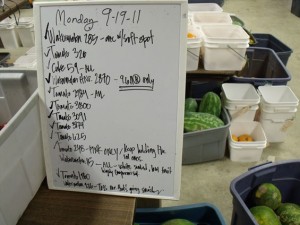Where to start: How about peppers? How about today?
/‘Grandpa Ott’s’ morning glories cover the south face of the iconic barn behind the Lillian Goldman Visitors Center at Seed Savers Exchange. But don’t be fooled by the scenery, this barn is much more than pretty postcard scenery—especially come harvest time!
Behind that wall of sleepy morning glories lies one of the busiest seed saving operations in the country—the first hint of which is the unmistakable sweet aroma of ripe melons drifting from the open double doors. Colorful piles of ripe fruits and veggies sit waiting in buckets while fans blow gently over screens of tiny seeds on drying racks. The colors, smells and sounds are almost as overwhelming as the neatly printed to-do list on the staff white board.
But of course it hasn’t always been like this. SSE’s seed saving operation started in a kitchen, probably much like your own, more than 36 years ago. That’s where we started and that’s where the seed saving renaissance is taking place today! If you’re reading this blog, it means that you’re part of this movement—or at least you could be. You can start saving your own seeds yet this season—today in fact!
Getting Started You don’t need any special tools or equipment to start saving pepper seed. Saving pepper seeds also gives us a chance to review some essential seed saving info on pollination.
Unlike hybrids seeds, seeds from open-pollinated and non-hybrid plants can be saved and replanted to produce plants that retain most of the characteristics of the parent. This means that if you’re growing some heirloom peppers from SSE, you don’t have to buy the same seeds from us next year. In fact, if you learn how to prevent cross-pollination and save the seed properly, you’ll never have to buy that seed again. But let’s not get too ahead of ourselves here!
One thing to know right away is that, while peppers can pollinate themselves, insect pollination is also very common. This means that if you have more than one variety of pepper in your garden— open-pollinated or hybrids—there’s a good chance the seeds you save will be crossed. You can still save the seeds, but the plants will probably be different from the parent.
By using isolating techniques, which we’ll cover in later posts, or only planting one variety of pepper in your garden, you can be more confident that the seeds you save will be true-to-type (i.e. produce the same plant as the parent). Here’s how:
Saving Pepper Seeds Cut open and remove the core from a fully mature pepper. You’ll know it’s mature because it has changed to its final color. To find out what color your peppers should be when mature, see the description on its seed packet or on our website. Rub the seeds onto a paper plate and set them out to dry away from direct sunlight until they are paper-dry.
If you’re handling hot peppers, you’ll want to use rubber gloves. Also, make sure you’re in a well-ventilated room to avoid respiratory problems.
If you’re trying to save seeds from very small peppers, try using a blender. Cut out the stems and blend the peppers with a little water at low speeds. The flesh and immature seeds will float to the surface and can be removed. Add a little more water and repeat until the seeds are clean. Drain the remaining mixture with a strainer before setting them out to dry (coffee filters work well).
Put the dry seeds in a paper envelope labeled with the seed variety and the year, and store in a cool, dry, mouse-proof area. This will help ensure that your seeds dry properly and stay that way. If you’re confident that your seeds are totally dry but not confident that you can keep them that way (i.e. your storage area might experience increased humidity in the summer months), you might consider storing the envelope in a mason jar. Adding silica gel to the jar will help take care of extra moisture that would otherwise rot your seeds.
You’ll know you did everything right when you’re harvesting a beautiful pepper of the same variety next season. And if you get something different, you’ll still learn a lot in the process. Like any adventure, the hardest part is simply getting started!
Give seed saving a try this season with peppers or tomatoes and let us know how it goes by leaving a comment below. You can also find more seed saving tips on the SSE forum.
Thanks to SSE staff member Colin Curwen-McAdams, advisor Suzanne Ashworth, and board members David Cavagnaro and Rosalind Creasy for their contributions to this article.
- For more seed saving tips, check out Suzanne Ashworth’s seed saving classic “Seed to Seed.”
- Learn more about what to consider when saving seeds
















